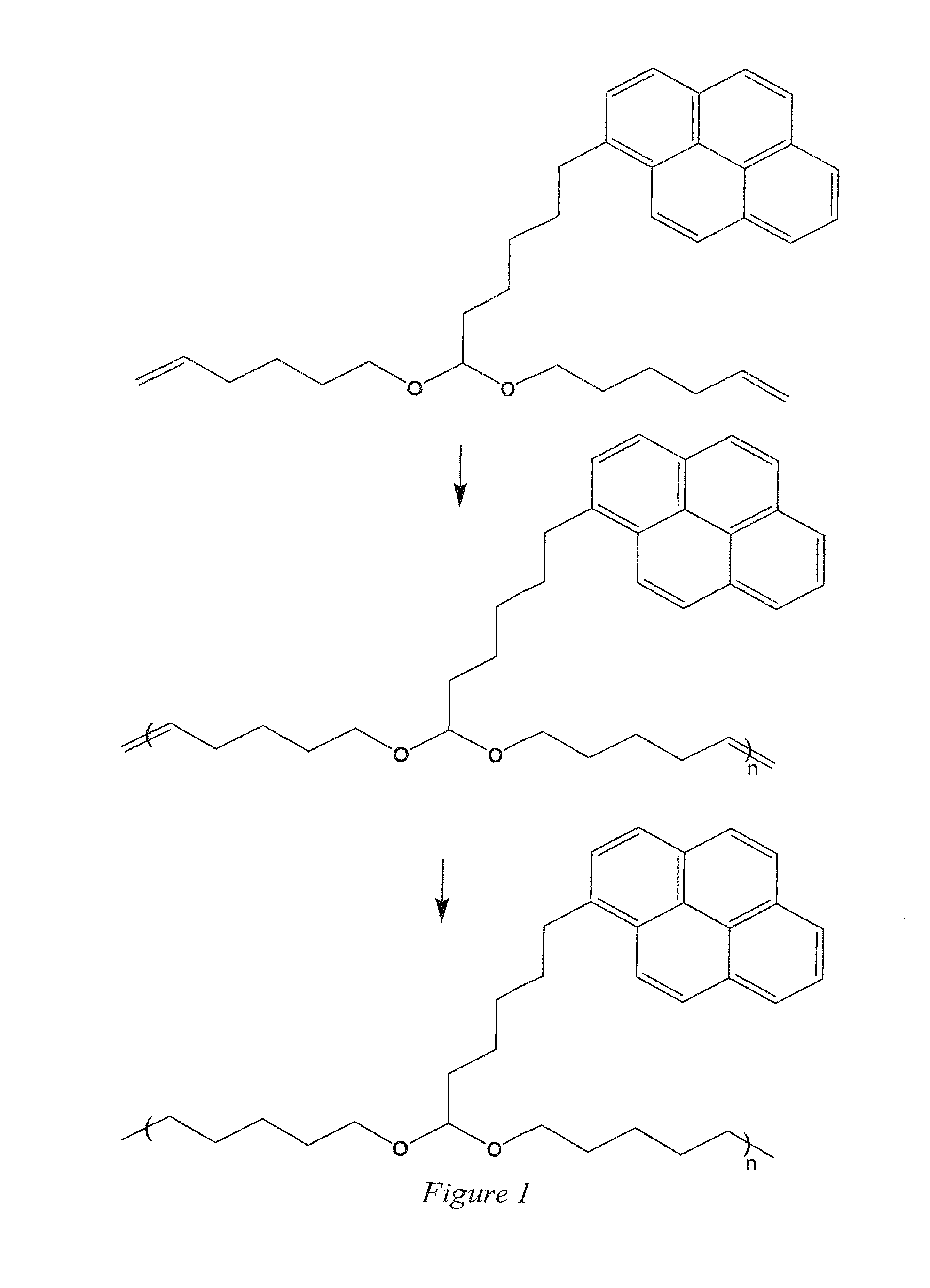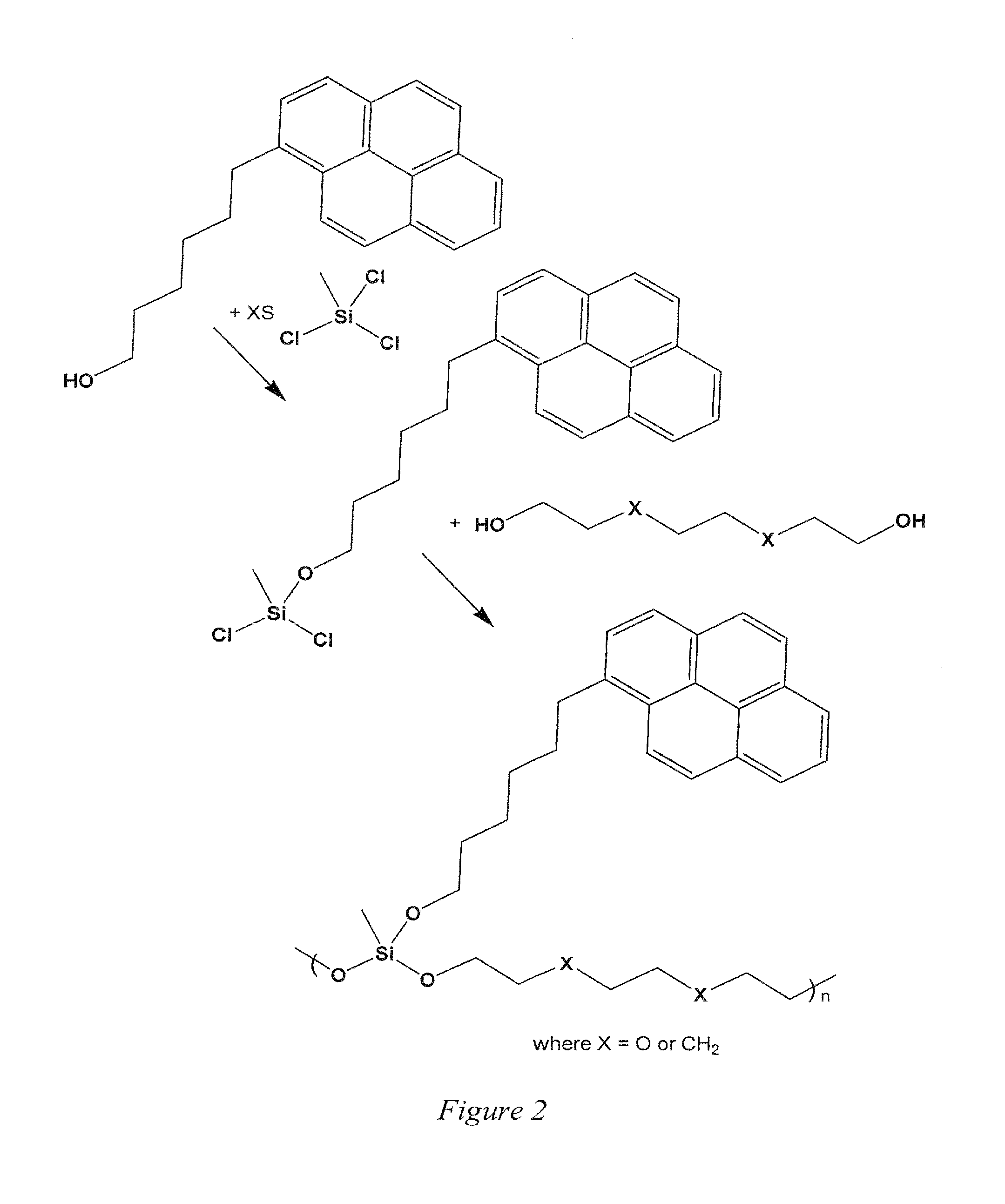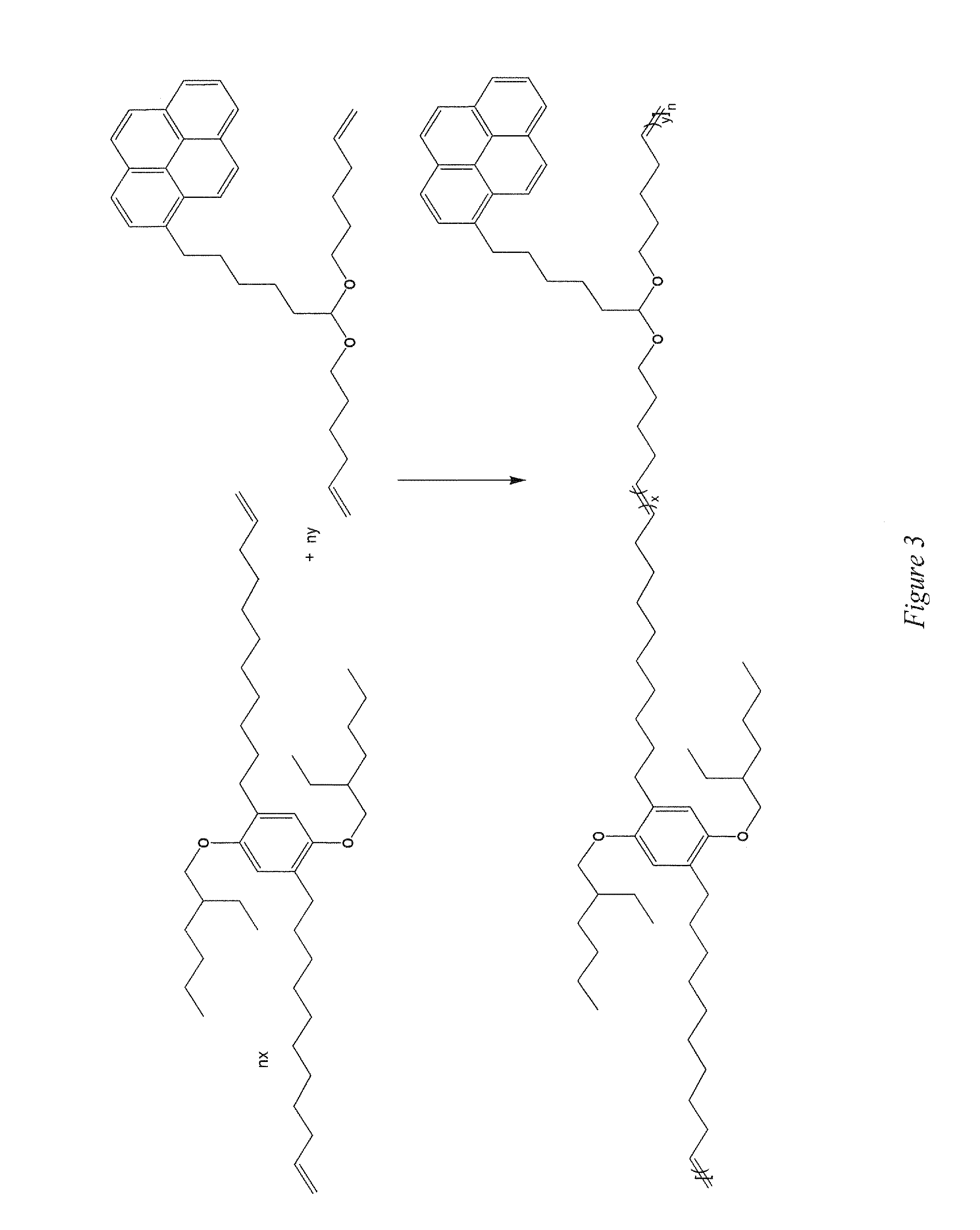Nanotube dispersants and dispersant free nanotube films therefrom
a technology of nanotubes and nanotubes, which is applied in the direction of cellulose coatings, coatings, inks, etc., can solve the problems of inability to use high-end electronic applications, irreversible binding of nt dispersants, and inability to form transparent conductive thin-film electrodes, etc., to improve the conductivity of the film and reduce the apparent transparency of the film. , the effect of reducing the apparent transparency
- Summary
- Abstract
- Description
- Claims
- Application Information
AI Technical Summary
Benefits of technology
Problems solved by technology
Method used
Image
Examples
Embodiment Construction
[0018]Embodiments of the invention are directed to an on demand degradable polymeric dispersant for carbon nanotubes (NTs) having a multiplicity of NT associative groups where the dispersant can be removed after formation of a film or other structure by a degradation of the dispersant to individual, monomeric, associative groups that remain after cleavage from the polymer. The associative groups can be polycyclic aromatic units, such as a pyrene units. The NT associative groups bind strongly to the NTs in a cooperative manner when linked via the polymer, where binding of multiple individual NT associative groups keep the NT coupled to the polymers independently of the association or dissociation of any individual NT associative group with the NT. Upon cleavage of cleavable groups, the NT associative groups dissociate from the polymers, allowing the monomeric NT associative groups to undergo an associative / dissociative equilibrium that can be driven to the dissociative form and allow...
PUM
| Property | Measurement | Unit |
|---|---|---|
| transmittance | aaaaa | aaaaa |
| transparency | aaaaa | aaaaa |
| transparency | aaaaa | aaaaa |
Abstract
Description
Claims
Application Information
 Login to View More
Login to View More - R&D
- Intellectual Property
- Life Sciences
- Materials
- Tech Scout
- Unparalleled Data Quality
- Higher Quality Content
- 60% Fewer Hallucinations
Browse by: Latest US Patents, China's latest patents, Technical Efficacy Thesaurus, Application Domain, Technology Topic, Popular Technical Reports.
© 2025 PatSnap. All rights reserved.Legal|Privacy policy|Modern Slavery Act Transparency Statement|Sitemap|About US| Contact US: help@patsnap.com



